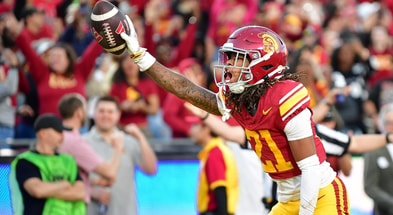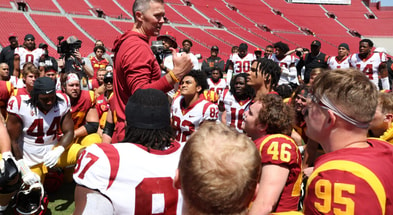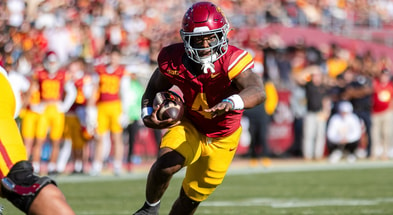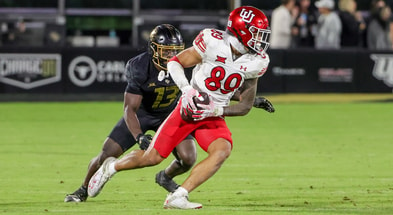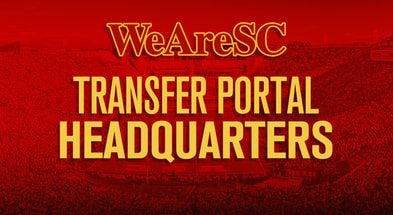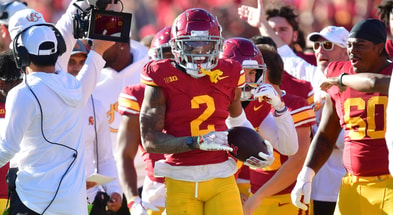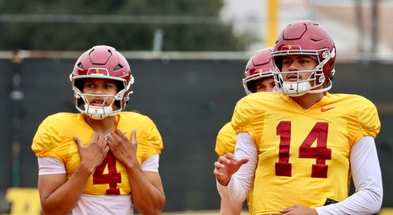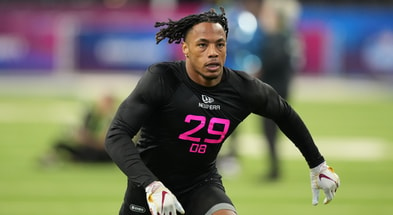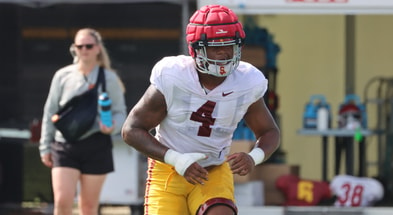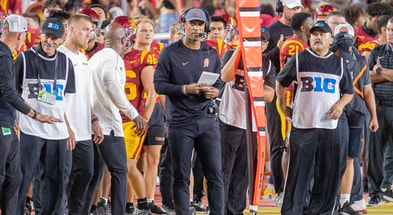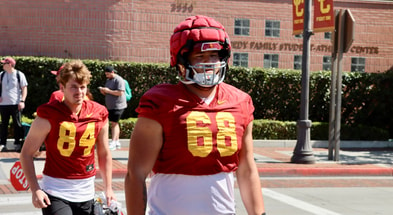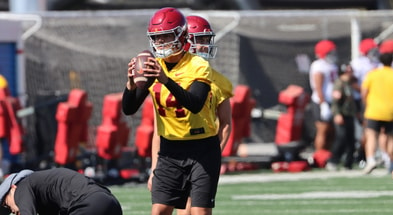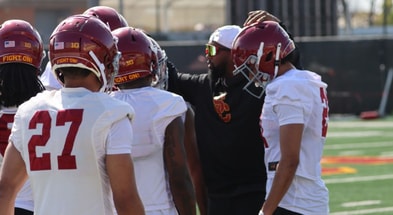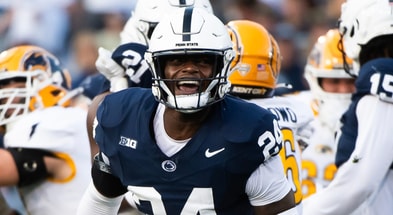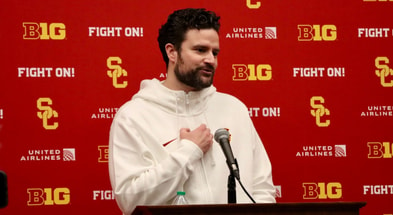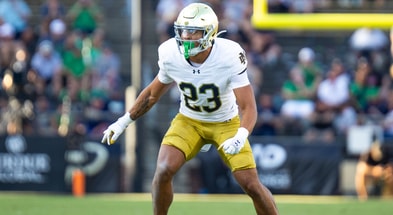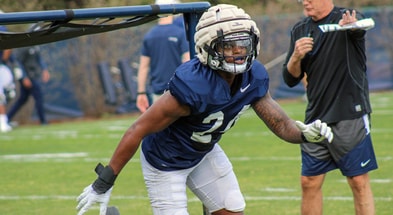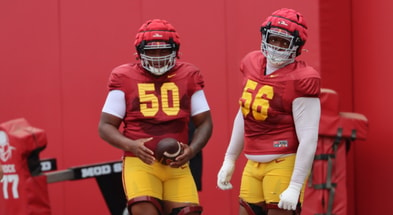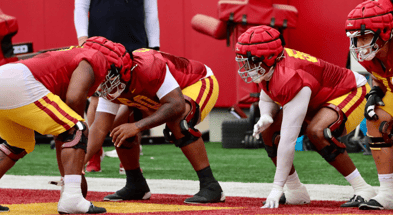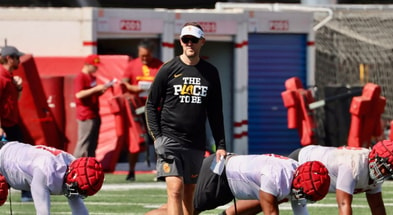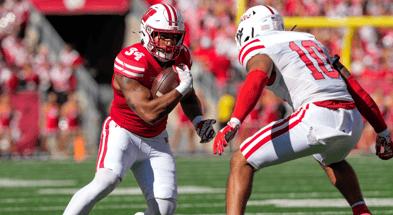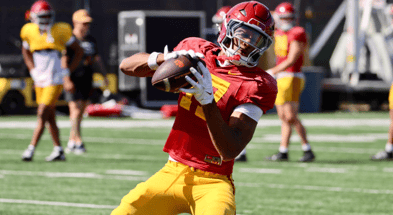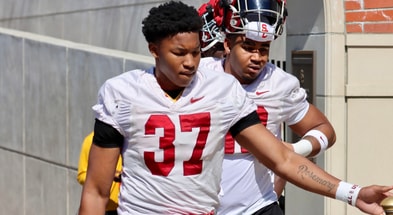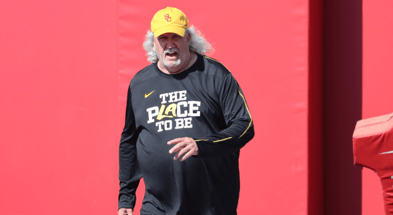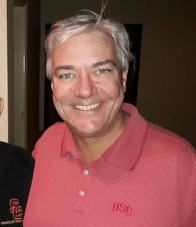Musings from Arledge: History of the World (Or Recent USC Football) Part 1
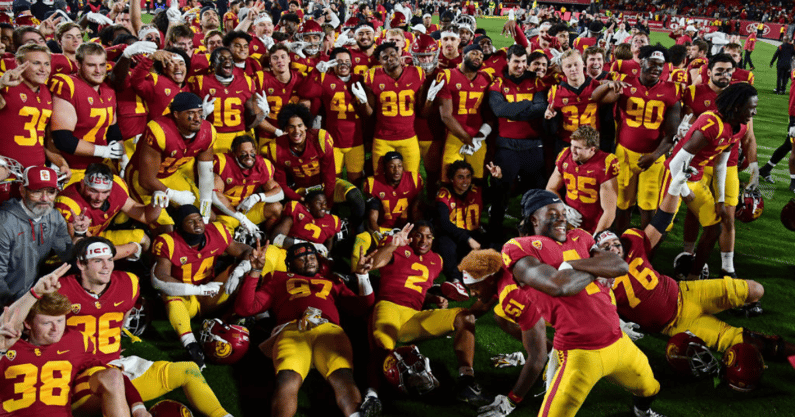
Dickens started his epic novel about the French Revolution with the line, “It was the best of times, it was the worst of times.” But I can’t start this epic the same way, because there weren’t any best of times. The times mostly just sucked.
Somebody on the WeAreSC message boards asked for an analysis or history of how we got to where we are today with USC football. It sounded like a worthwhile offseason project, so I decided to take up the challenge.
Let me be clear about what this is and what it is not. This is not a well-researched book. It is not a follow-up to the things Loel Schrader or Steve Bisheff have done. They were professional journalists. Good ones. By contrast, I didn’t spend the last six months interviewing former coaches, players, and administrators. (Well, I’ve interviewed some of them.)
No, what follows are the impressions of a longtime USC fan. Think of it as an epic poem based on my own memories – maybe like a USC football Epic of Gilgamesh or The Iliad, but without the supernatural, without any sex, with relatively little violence (especially from Monte’s defense), and written with far less skill. But before you walk away disappointed, it will be full of facts, some of them historically accurate, some of them probably questionable, as well as large heaps of my own opinions and biases. So let us begin The Descent Through College Football Hell: A Musings Oral History of Recent USC Football.
I. Well, This is an Unfortunate Turn of Events
Imagine you’re a rock star. You’re walking down the street, thousand dollar bills falling out of your pockets because they don’t all fit. You’ve had ten platinum records in a row. Paul McCartney keeps calling to ask how you write songs, but you just send him to voicemail, because you’re bigger than the Beatles. You stopped returning the calls of all the Victoria’s Secret models who call your cell. And then, out of nowhere, you’re hit by a train.
That’s kind of what it was like to be a USC football fan in late 2009. No, things had not been perfect. But it had been a pretty amazing run. Walking out of the Horseshoe in September of 2009, USC fans had just seen their Trojans beat a top-10 Ohio State team at a legendary road venue behind a true freshman quarterback. It was the 88th win in 98 games – with none of those losses being by more than one score – with two national titles, three Heisman Trophies, and seven straight top-four finishes. It was fun.
What came next was not fun. USC finished that season with four losses, including a terrible loss at Washington, an embarrassing upset at home against Arizona, and bloody beatdowns by Oregon and Stanford, which were the first games in a very long time when USC not only lost, but got physically dominated and embarrassed. For the first time in a long time, USC football looked vulnerable.
And the blows kept coming. In January, just weeks before national signing day, Pete Carroll left for the Seattle Seahawks. Months later, the hacks and criminals at the NCAA – through a committee made up of law professors and staff lawyers with no regard for due process, university officials with no regard for the truth, and led by maybe the biggest hypocrite in the world of sports – oversaw an inquiry so crooked it would have embarrassed Soviet jurists just so they could try to destroy USC football with the worst sanctions since SMU. Max Nikias and Pat Haden responded with Quisling-like courage, going on an apology tour, talking about the “fair-minded folks” at the NCAA, and failing to fight – not just with litigation or threats of litigation as Penn State, Miami, Ohio State and others soon would – but even in the court of public opinion. Nikias and Haden let USC be slandered by the media after the NCAA lied – flat-out lied – in their report, and they did nothing but surrender, grovel, and apologize. That’s my toned-down assessment because I’m trying to be kind. Hit me up at the Coliseum sometime if you want my blunt assessment.
USC was dealt a bad hand; there can be no doubt about that. Only exceptional leadership could rise to such an occasion. USC football did not have exceptional leadership. It had Max Nikias and Mike Garrett, Pat Haden, and Lynn Swann.
USC was in a perilous state by 2010. The program was still seen as one of the elite in the nation, and it’s recent success was one of the great runs in college football history. But USC had to replace a great coach, and USC did not have a history of good coaching hires.
Shall we take a walk down memory lane? In December of 1997, USC replaced John Robinson with Paul Hackett, a non-descript NFL offensive coordinator (his team, Kansas City, was generally a mediocre offensive unit that ran the same West Coast Offense that just about everybody else was running) who had failed in spectacular fashion in his only previous head coaching opportunity at the University of Pittsburgh. In other words, USC looked at a guy that had crashed the plane the only other time he was in charge in the cockpit and hired him because – he was a marginally competent assistant working for a successful head coach in a defense-first franchise? And Hackett’s tenure at USC was exactly what you might expect of a mediocre NFL assistant who had completely tanked in his only run as a head coach: unmitigated disaster.
Why would they hire Paul Hackett? No other blue-blood program was knocking down his door. One reason, and this is the moral of this sad tale: because he had a history with USC as an assistant under John Robinson. And as time would tell, there is no surer qualification for getting hired as the USC head coach or athletic director than prior involvement with USC football. A connection with USC football is the equivalent of getting awarded a free, extra 500 points on the SAT; it’s going to catapult you well past most of the other more qualified applicants at the admissions office.
Hackett’s replacement, Pete Carroll, obviously turned out to be a brilliant hire. But let’s be clear: Garrett didn’t want to hire him; he was just the last guy left standing outside Heritage Hall (he was there to pick up his daughter, I think) after Garrett had tried to hire everybody else first. Garrett promised the fan base that he would hire a proven college head coach. So he tried to hire Dennis Erickson. That failed. Then he tried Mike Belotti. Failed. Then Mike Riley. (Why Mike Riley? Because he had done a pretty good job at Oregon State, taking the Beavs from terrible to decent, and – surprise! – he was a former USC assistant.) Failed. Thankfully. Only after all of those efforts publicly flamed out did Garrett turn to Pete Carroll.
USC fans were right to be skeptical initially. I was one of many idiots who expressed my displeasure with an unfriendly fax to Heritage Hall. I’m ashamed and have since repented. But, still, this was not what Mike Garrett had promised and quite clearly not who Mike Garrett wanted.
Sometimes the fourth choice turns out to be an accidentally inspired choice, and USC fans were about to go on a ride they never expected. Pete Carroll turned out to be the right guy at the right time. Pete was a defensive genius – he had been a top coordinator in the NFL for quite some time – he had previous head coaching experience with two NFL franchises, and his personality and philosophy perfectly fit Southern California and the college game. Pete was, simply put, one of the great college coaches of the last fifty years. USC fans briefly became spoiled.
We would be punished for that.
II. Pete Carroll’s Exit and Lane Kiffin’s Hiring
The NCAA sanctions were going to cripple USC no matter who was coaching, as that is exactly what they were designed to do. Sure, had Pete Carroll remained at USC, the Trojans would have had a better chance of weathering the sanctions. Pete would have continued to recruit at a very high level – at least according to all of the rankings – and his experience and maturity would have been a significant contrast to the coaches that followed him.
But we should also keep in mind that USC had taken a step back just even before Carroll left. I don’t just mean the disappointing four-loss season in 2009, though that was a symptom. I mean USC had gone from the undisputed king of college football to one of a handful of very good programs. Part of this is the loss of some great assistant coaches (Norm Chow and Ed Orgeron, in particular). But part was a drop in talent level. USC was still churning out stars, but not like it had been. And USC was still good. Just not like it had been.
We should never forget that as great as Pete Carroll was as a coach and motivator – and he was – and as great as his staff was when he had Norm Chow and Ed Orgeron in the fold, it was Pete’s recruiting success that turned USC into the nation’s top program. Look at this recruiting run:
USC’s 2002 class, which was ranked #8 nationally, brought in three All-Americans, including arguably the best WR in modern USC history, Mike Williams; USC’s greatest punter, Tom Malone; and safety Darnell Bing. It also contributed quality players like Dominique Byrd, Fred Matua, Dallas Sartz, Brandon Hancock, and LaJuan Ramsey.
The 2003 class (ranked #2 nationally) may be the greatest USC recruiting class of all time. I don’t need to provide any analysis for this one. Let me just list the names: Reggie Bush, Sam Baker, Sedrick Ellis, LenDale White, Steve Smith, Ryan Kalil, Fili Moala, John David Booty, and Lawrence Jackson. Bleacher Report ranked this as the third-best recruiting class in college football history.
Top 10
- 1New
CFB Top 25
Post-spring rankings
- 2
Chad Baker-Mazara
Big Ten bound
- 3Hot
Baseball Top 25
Substantial movement in rankings
- 4
Donald Trump credited
For helping Shedeur Sanders get drafted
- 5
Way-Too-Early Top 25
Draft deadline, portal shakeup rankings
Get the On3 Top 10 to your inbox every morning
By clicking "Subscribe to Newsletter", I agree to On3's Privacy Notice, Terms, and use of my personal information described therein.
In 2004, Pete brought in another class ranked #2 nationally. It featured Clay Matthews, Dwayne Jarrett, Keith Rivers, Fred Davis, and Deuce Lutui. But it also had some disappointments, like the frequently injured Jeff Byers, and five-star busts Thomas Herring and Jeff Schweiger.
And the 2005 class, ranked #1 nationally, included Mark Sanchez and All-American tackle Charles Brown on offense and the heart of one of the great defenses of the last 25 years: Brian Cushing, Rey Maualuga, Kevin Ellison, Kyle Moore, Cary Harris, Kevin Thomas, Will Harris and Kaluka Maiava. Bleacher Report ranked this as the 19th-best recruiting class in history.
This was a spectacular four-year run of recruiting. Probably only Alabama under Nick Saban and a few of those Miami teams came close to collecting this level of talent. (Kirby Smart may also be knocking on the door.)
After this, Pete continued to recruit at a high level according to the recruiting rankings, but it’s also clear that the classes in his later years were not at the same level. The 2006 class was rated #1 nationally and featured some good players. But other than Taylor Mays, a three-time All-American, many of the higher-ranked recruits either had decent careers (Allen Bradford, C.J. Gable, Stafon Johnson, Shareece Wright) or were outright busts (Vidal Hazelton, Antwine Perez, Emmanuel Moody, Jamere Holland, Joshua Tatum).
Likewise, the 2007 class (ranked #2 nationally) featured Ronald Johnson, Kris O’Dowd, and Joe McKnight – a quality player who never lived up to the hype only because he did not turn into Reggie Bush. But it also featured five stars Everson Griffen (who was underwhelming at USC before becoming a very good pro), Marc Tyler (a good player but not a national star), and Chris Galippo, whose back injuries sabotaged his promise. The team also featured a series of highly ranked busts like Aaron Corp, Marshall Jones, Martin Coleman, Michael Reardon, and Broderick Green.
Carroll’s recruiting classes continued to be highly ranked. But the percentage of hits with the elite recruits was falling. None of his later classes compared to the 2003 or 2005 hauls. USC was elite. But it was no longer the undisputed king of college football. It no longer had a huge talent advantage on the other blue-blood programs.
And things were about to get bleak.
When Carroll left in January of 2010, weeks before signing day, USC turned to Lane Kiffin, setting off riots in Tennessee and raising eyebrows in Southern California.
We know now that Lane Kiffin’s hiring was a mistake – but, I think, an understandable one at the time. USC had a short time to hire a new coach if it wanted to salvage its recruiting class, and Kiffin was not an unreasonable bet. He was coming off a promising year at Tennessee – Vols fans were rioting because they thought Kiffin and staff were going to bring them back to the glory days – and he was bringing the kind of experienced staff you would want from a young coach, including Ed Orgeron, one of the greatest assistant coaches and recruiters in modern college football history, and Lane’s father, Monte Kiffin, one of the greatest defensive coordinators in NFL history.
He was also a former Pete Carroll assistant, and that was obviously critical. Mike Garrett was hoping to reunite the band, only without its leader. It turns out the leader matters. Mike was trying to reunite the Beatles without John or Paul.
To be fair, it’s not clear that anybody could have effectively played the cards the NCAA dealt Lane and USC. And in many respects, Lane wasn’t inept. He handled the roster management about as well as it could be handled, and his 2011 team went 10-2, beat Chip Kelly and Oregon at Autzen, won in South Bend, and finished in the top five despite having a depleted roster. It was, in many respects, a tremendous accomplishment. It seems clear in retrospect that an adult Lane Kiffin might make a decent football coach.
But it’s also clear that Monte was well past his prime – light years past, I think – and Lane was simply not ready to be a head coach. He was not yet an adult. He was smart and had promise. You don’t get hired to run an offense by Pete Carroll and Nick Saban unless you know something about football. But he was also immature, dishonest, reckless, and had such poor people skills that he effectively destroyed the program culture. So you had the deflated football controversy – a few years before Tom Brady’s, making Lane a true trailblazer – the controversy over Kiffin lying about whether he had voted USC #1, the jersey-changing controversy, the did-Kiffin-get-punched-in-the-face-by-an-assistant-coach controversy (is it wrong to say I really hope that he did?), some shockingly bad defense of a type never before seen at USC (it’s certainly been seen since), and a rout in the desert where the entire USC team quit at ASU, which led to the tarmac controversy. It was a weird time.
Pat Haden fired Lane Kiffin. He had to. But I still contend that the decision to hire Kiffin was not crazy. It was a well-calculated decision that ultimately failed.
It was the next, completely inexcusable hire that started USC football down its lengthy death spiral. From this point on, USC fans wandered the streets aimlessly like the depressed and pathetic Ron Burgundy wandering the streets of San Diego with a carton of warm milk, screaming “Sark was a bad choice!”
Coming up next in Part 2: Sark and the Son of an O-Line Coach

